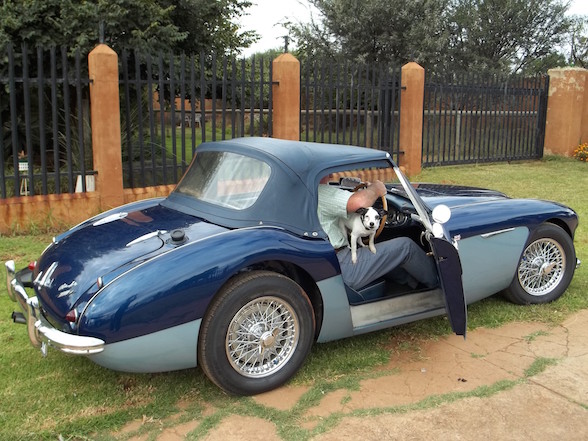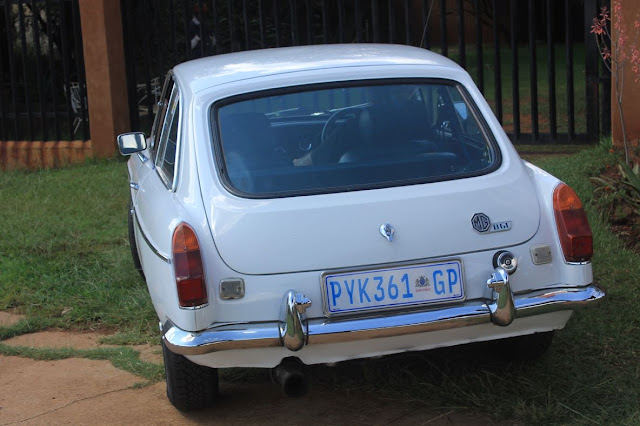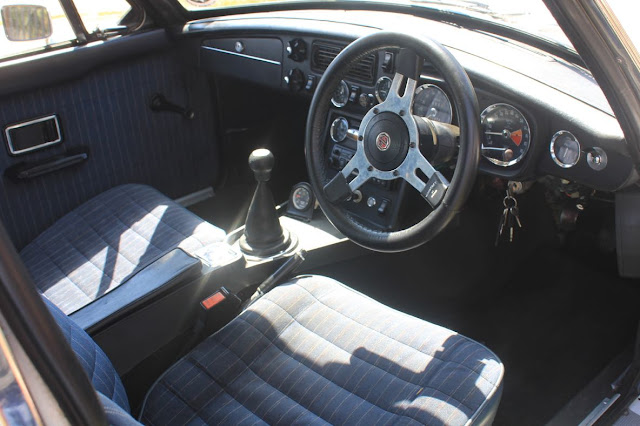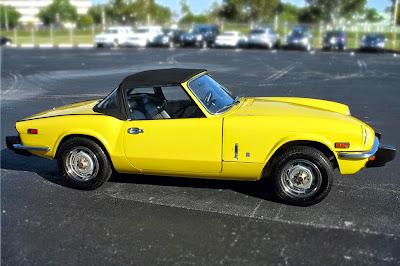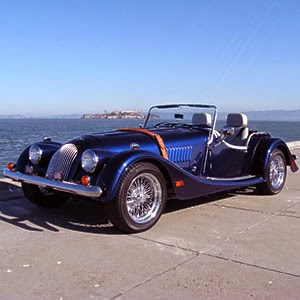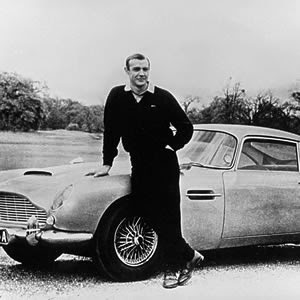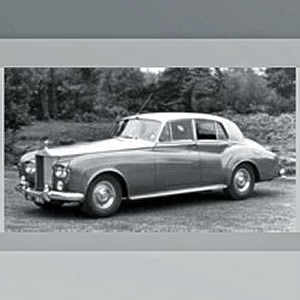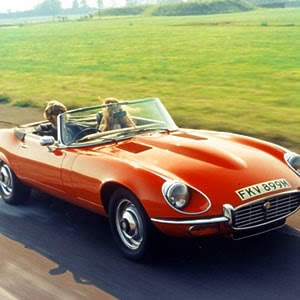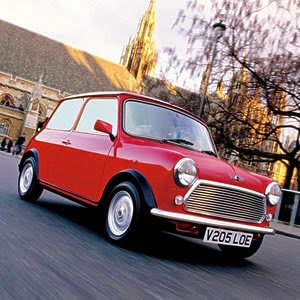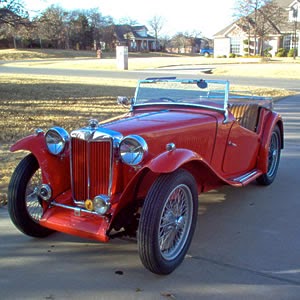Well-heeled enthusiasts are dropping some serious money on collectible cars these days, not only as investments but as rolling works of art that can be appreciated as few appreciable assets can – out on the open road.
Collectible cars have always been a great investment and there are a lot of people out there who love cars and feel more comfortable putting their money in auto-mobiles than leaving it stagnate in a bank account.
Although there’s no crystal ball that lets an investor determine the future value of a collectible car, here are a few helpful tips for those looking to add one or more vintage rides to their portfolios as well as a wish list of 10 up-and-coming classic models that can be expected to grow in value over the coming years.
- Choose a particular model more for its personal and emotional appeal than strictly as an avenue for profit. Choose what you like, something you’ll enjoy driving and owning, and if there’s a dividend down the road – congratulations.
- But a word of caution - some cars may have great visual appeal that may not translate into value or reliability. In other words, do your homework and use the Internet and other resources to determine which models are most-desired by other collectors and to help estimate current values.
- Inspect the car thoroughly for rust, accident damage or any other faults
- As is the prudent course of action when buying any used vehicle, buy vintage cars only from reputable sources and have an expert mechanic check out a model under consideration to ensure it’s in good shape. Make sure the technician you choose is well versed in the peculiarities of the particular genre of vehicle in which you’re interested. If you’re buying a British sports car, you need to find a mechanic that understands British cars.
- Choose the best model in the best condition within a given class you can afford.
- Keep an eye out for originality – the fewer numbers of a particular model built or the rarity of a particular option combination included, the greater its value.
Even when stored properly, a car deteriorate when it’s not driven – by ‘exercising’ the car it stays in shape,. One of the best things you can do for a collectible car is to drive it. There’s no other investment that allows that kind of enjoyment!
TOP 10 (Starting at No. 10)10. Morgan Plus 8. Built from 1968-2004
Take an unmistakably British roadster design, refrain from all but the most necessary updates to comply with regulations, build -- partially from wood -- in low numbers and, finally, become an icon. Now repeat. This was basically Morgan’s playbook for decades, and the team’s star forward was unquestionably the Plus 8. Built from 1968-2004 with few visual changes, this Moggie looked like ye olde sporting motorcar, but handled quite well and could keep up with many contemporary sports cars. Even today, there’s something quirky and fun about squeezing into one of these all-time British cars for a drive, especially the propane-fueled '84-'89 cars whose Buick-designed, Rover-sourced 3.5-liter V8 had fuel injection and a certain agility dulled by the bigger engines that soon followed.
9. Austin-Healey Sprite. 1958-1961
Donald Healey’s ultimate statement of affordable fun turns 50 this year, and even though the Austin-Healey Sprite’s demise came in 1969 (the less charismatic MG Midget cousin soldiered on another decade), it’s still one of the most popular all-time British cars for the street or, when modified, the track. Healey’s cost-saving approach depended on unabashed raiding of Austin and BMC parts bins, but the early Mk I Sprites of 1958-1961 featured an unmistakable front-end treatment: The Brits nicknamed these cars Frogeyes, whereas we nicknamed them Bugeyes. Regardless, these are the Sprites to own -- the ones wearing smiles, as big as their owners’.
8. Lotus Elise. First produced for Europe in 1996
Lotus founder Colin Chapman may have left us too soon, but his influence lives on with one of the all-time British cars worthy of being called a Lotus: the Elise. Chapman put Lotus on the map through obsessively cutting all unnecessary weight in his cars and tuning them for performance and handling. First produced for Europe in 1996, and finally appearing in the U.S. as a 2005 Series 2 model, some consider the Lotus Elise to be the car that saved the company’s bacon. Its success marked the long-overdue return of a genuine, reasonably affordable British sports car.
7. Landrover Series I, II and III. Between 1948 and 1985
Let’s make it perfectly clear: This is not about the squeaky-clean yuppie haulers that litter the suburbs. This is the British equivalent to America’s Jeep -- and to some Americans, the more desirable choice. Between 1948 and 1985, Series I, II and III Rovers were rugged and sparse, often matching the terrain they crossed. Like the Jeep, there was no pretense in the Rover’s presence, just incredible off-road ability. So as you might guess, this makes for a less than placid ride and handling on pavement. For the most agreeable compromise, shop for later Series IIIs from '82-'85 with their stronger half shafts and availability of limited creature comforts.
6. Aston Martin DB5. 1963
True, this is the model famous for its appearances as James Bond’s personal car, but even without all the 007 gadgets, an Aston Martin DB5 is quite a performer. Its 4.0-liter I-6 was smooth and powerful, offering up 282 horsepower and 8.1-second 0-60 mph acceleration on the way to a 143-mph top speed. This wasn’t half bad for 1963, and even now, a well-sorted DB5 doesn’t completely feel its age from behind the wheel. Production gave way to the DB6 in 1965, and the model’s celebrity association doesn’t make finding or affording one any easier. That’s not to say this all-time British car isn’t totally worth the effort.
5. Bentley Continental GT.
It was a tough call whether to recognize the impact of the 1920s 4.5-liter Blower Bentley or to celebrate the contemporary Continental GT coupe. In the end, the GT -- even if derided by some as a “German Bentley” due to the marque’s VW ownership -- takes the honor. Short of supercars at twice the price, there just aren’t many modern cars that make the statement of the Continental GT. Luxury and performance credentials are implied at a glance and immediately substantiated by the driving experience. Triple-digit speeds are attainable in a flash, but the whole affair is drama-free from inside the well-appointed cabin. Truly, that qualifies this all-time British car as a Bentley.
4. Rolls Royce Silver Cloud II. From 1959-1962
Today’s Phantom sedans and convertibles are impressive, but only time will tell whether their legends compare to the Silver Cloud’s. From 1959-1962, this car was the modern link to the marque’s earliest models that amazed buyers with durability, refinement and quiet, fuss-free operation. The Silver Cloud II featured understated improvements in cabin and exterior design elements that would live on in later cars for decades. Speaking of long-lived traits, the introduction of the Silver Cloud II also marked the debut of the 6.2-liter V8 and this all-time British car's “adequate” horsepower.
3. Jaguar E-type.
Earlier E-Type models from '61-'64 are seen as more desirable due to the covered headlamps and the entertaining 3.8-liter I-6 engine. For many enthusiasts, this is not a British car, this is the British car. Even Enzo Ferrari remarked that it was the most beautiful car ever made, upon its 1961 release. He wasn’t alone in this sentiment, as the immediately popular E-Type not only looked stylish enough to play with a Ferrari, it had the power to run with them. Jaguar press materials claimed 150 mph was possible, and if this was a little optimistic, it wasn’t off by much. Owners today probably aren’t as keen to explore their all-time British cars' upper limits, given the strong market and consistent demand. Earlier E-Type models from '61-'64 are seen as more desirable due to the covered headlamps and the entertaining 3.8-liter I-6 engine.
2. Austin Mini. 1959 to 1967
New MINI Coopers are typically dwarfed by just about anything on four wheels -- except maybe for the legend it’s based upon. And while the new car at least deserves an honorable mention in a review of all-time British cars, the original 1959 car made it all possible, even if it was somewhat by accident. Sir Alec Issigonis was only acting on orders to design a fuel-efficient car, not trying to create a legend -- but it turned out that both happened in the process. Thrift-minded consumers and celebrities alike celebrated the Mini, and it also made a name for itself in the racing world. Sales in the U.S. never matched those overseas, and tightening federal regulations didn’t help; so finding a decent '60-'67 model wasn't exactly easy.
1. MG TC. 1945-1950 You have to wonder what the state of sports cars would be today without the 1945-1950 MG TC. On its own, frankly, it was nothing spectacular. However, MGs were nothing like the typical cars across the pond, so they became a hit with American GIs abroad. Some brought the little TCs home after World War II, while others quickly bought them as dealers sprang up. Regardless, the acceptance of the unconventional car within such a car-centric culture is likely to be a major factor in what followed here and around the world.
. 




